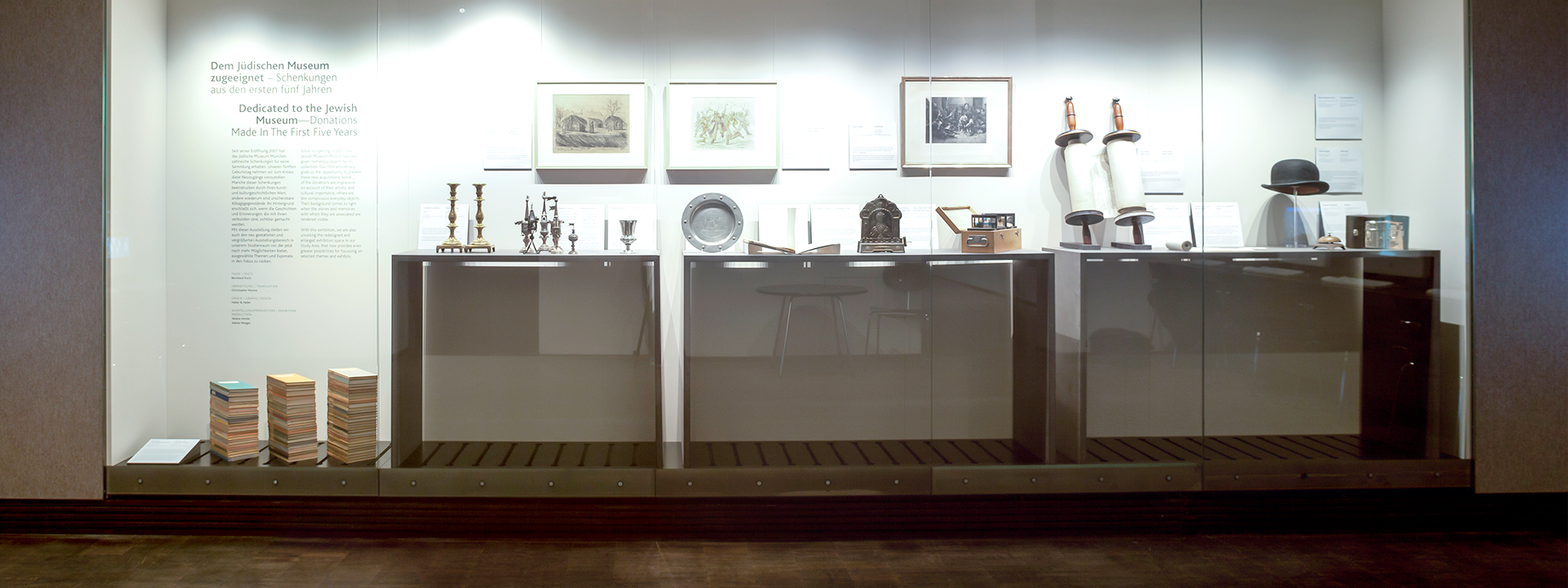Study Area
In addition to the three exhibition levels, other spaces are available to our visitors where they can expand their knowledge. The Study Area on the first exhibition level is one of these.
The Study Area is a space equipped with variable showcases that make it possible to stage small, specialist exhibitons, thus making an additional contribution to the discourse on current issues related to Jewish cultural history. Items from our continuously growing collection can also be displayed here in detail on an intimate scale.
Study Area
In addition to the three exhibition levels, other spaces are available to our visitors where they can expand their knowledge. The Study Area on the first exhibition level is one of these.
The Study Area is a space equipped with variable showcases that make it possible to stage small, specialist exhibitons, thus making an additional contribution to the discourse on current issues related to Jewish cultural history. Items from our continuously growing collection can also be displayed here in detail on an intimate scale.

October 25, 2023 – March 17, 2024 | Study Area Level 1
AUNT OLGA'S SILVER CANDLESTICKS
A Munich Family History
During the Nazi era, Jews were excluded and disenfranchised by countless laws. In 1939, a decree was issued that forced them to hand over jewellery and valuable household goods. Olga Maier from Munich also had to part with a pair of silver candlesticks.
From birth, Olga Maier had lived in the Bavarian capital and maintained a close relationship with her siblings, nieces, and nephews. Due to the Nazi regime the family was separated from each other. Some relatives fled abroad, Olga herself was unable to do so. She was deported to the Theresienstadt ghetto in 1942 and later murdered in the Treblinka concentration camp.
After the Bavarian National Museum acquired the candlesticks for its collection in 1939, their history as well as Olga Maier’s life remained obscure for a long time. It was not until 2022 that the pair of candlesticks was restituted to the community of heirs. In order to preserve the memory of Olga Maier, her descendants donated the candlesticks to the Jewish Museum Munich.
The exhibition in the Study Area tells the story of Olga Maier and her family, which is now scattered all over the world. At the same time, the pair of candlesticks exemplifies the systematic robbery and persecution of Jews during the Nazi era.
An exhibition in the Study Area of the Jewish Museum Munich.

